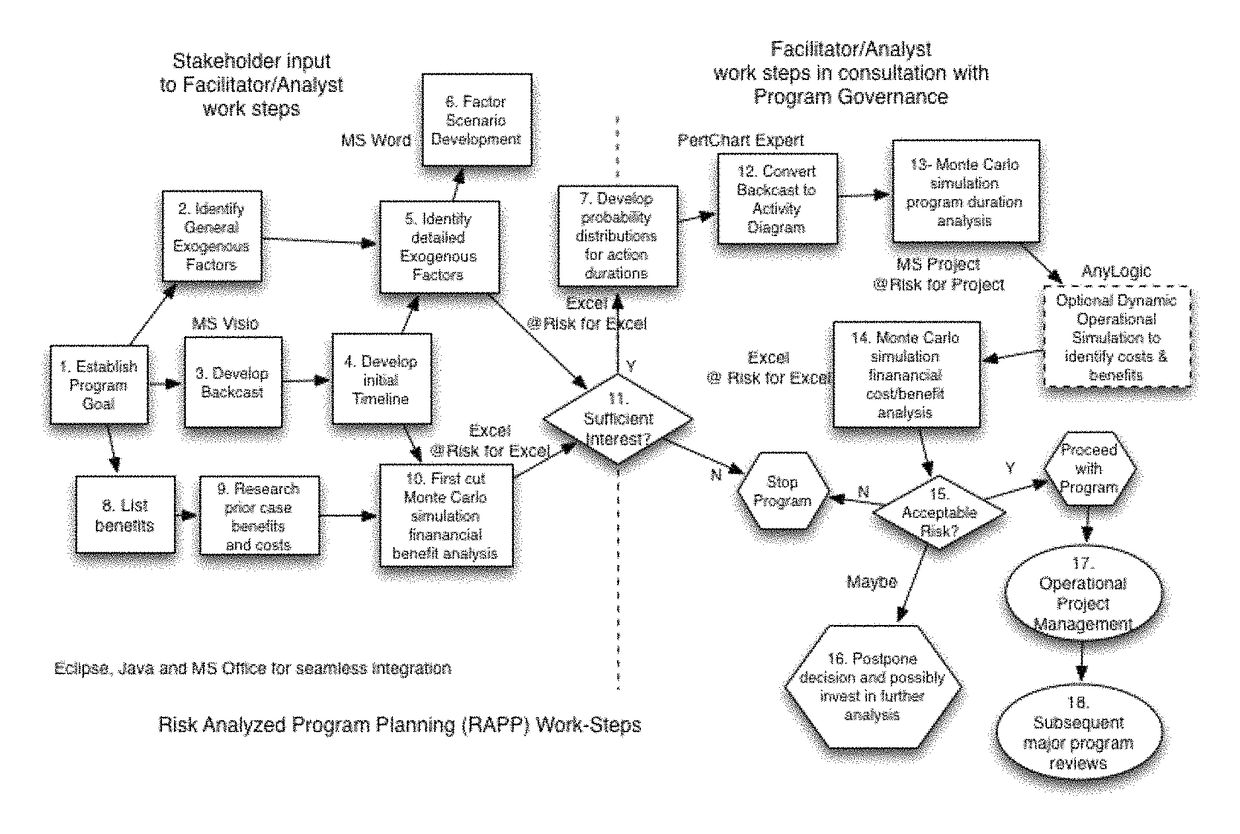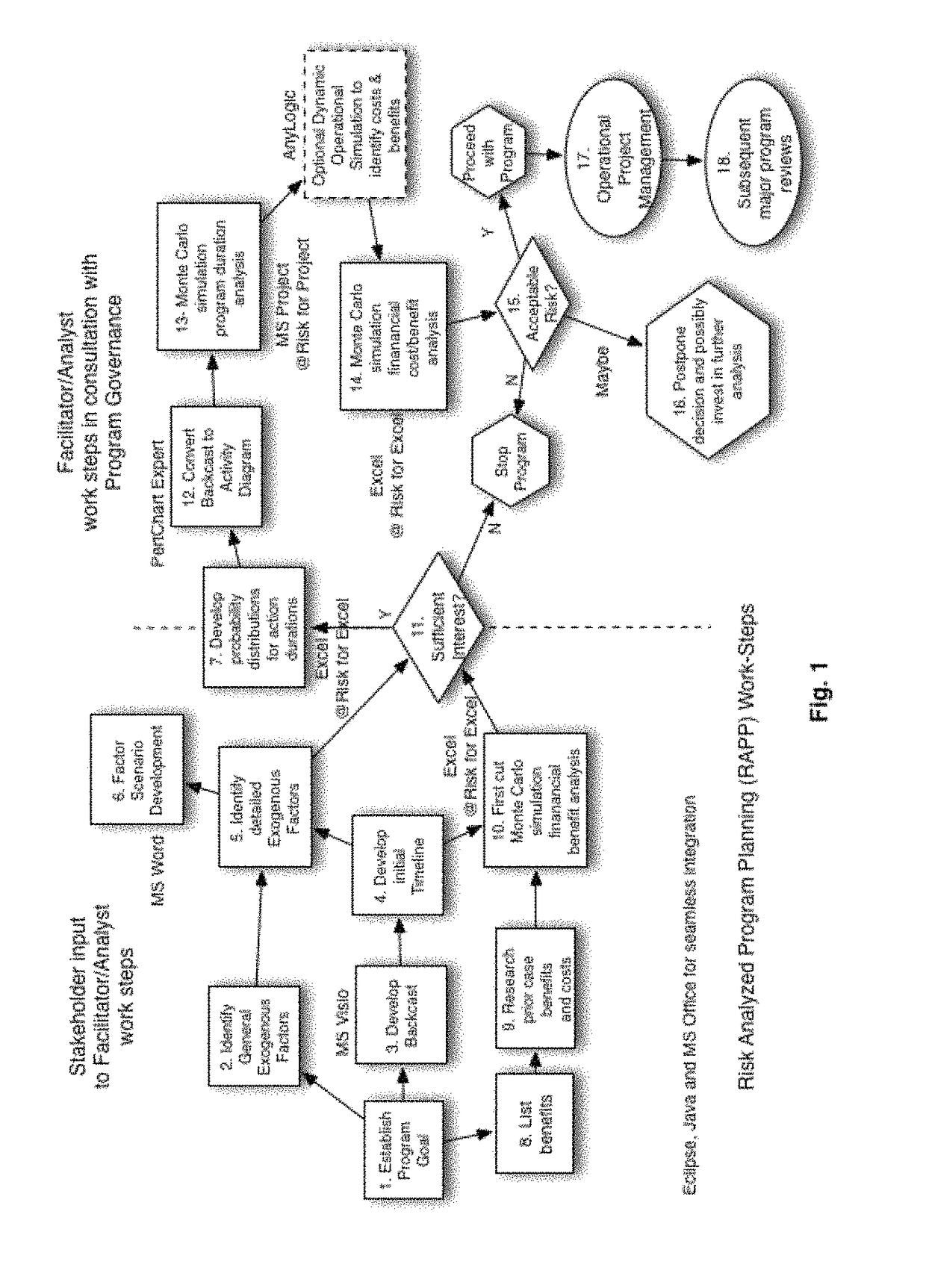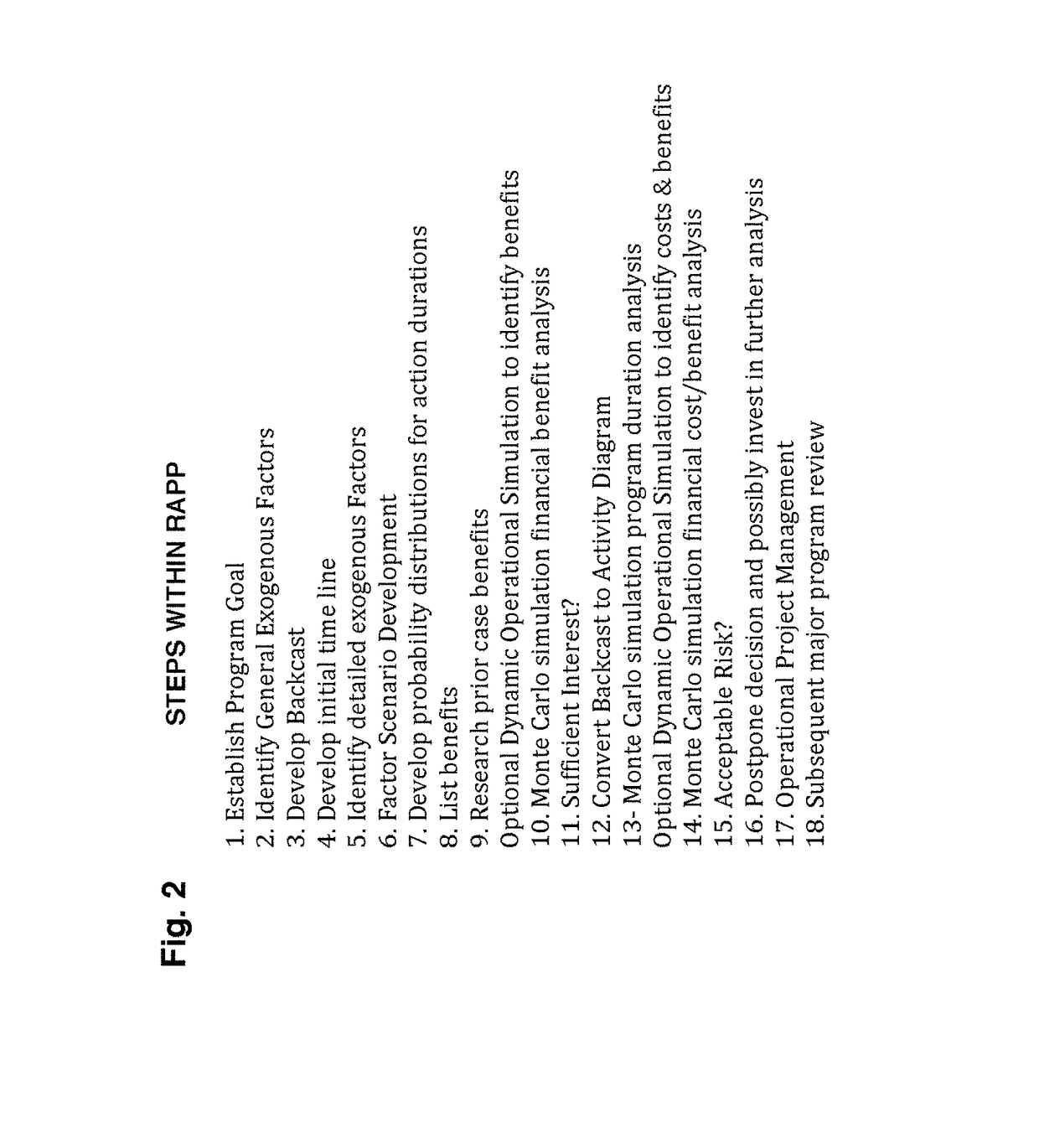System and method for risk analyzed program planning (RAPP)
a program planning and risk analysis technology, applied in the field of program planning system and method, can solve the problems of program failure, program failure, program risk, etc., and achieve the effect of reducing the likelihood of program failur
- Summary
- Abstract
- Description
- Claims
- Application Information
AI Technical Summary
Benefits of technology
Problems solved by technology
Method used
Image
Examples
Embodiment Construction
[0065]A particular embodiment of the invention is described below in detail and is intended to incorporate all alternatives, modifications and equivalents as to implementation on particular choices of computing hardware, software, or network platforms. The method and associated program storage device shown below can be implemented with a variety of appropriately functional procedural programming languages including C++, Visual Basic or Java, combined with any of a number of Integrated Development Environments (IDE's) such as Eclipse, Microsoft Visual Studio, and Oracle NetBeans IDE. The choice of operating systems and database management systems is open as well. The functionality can be deployed on single or networked workstations, distributed or centralized processors as well as remote servers. Such variations are intended to be covered by the claims defining the invention.
[0066]Of particular interest is the utilization of commercially available software for Dynamic Simulation, Wor...
PUM
 Login to View More
Login to View More Abstract
Description
Claims
Application Information
 Login to View More
Login to View More - R&D
- Intellectual Property
- Life Sciences
- Materials
- Tech Scout
- Unparalleled Data Quality
- Higher Quality Content
- 60% Fewer Hallucinations
Browse by: Latest US Patents, China's latest patents, Technical Efficacy Thesaurus, Application Domain, Technology Topic, Popular Technical Reports.
© 2025 PatSnap. All rights reserved.Legal|Privacy policy|Modern Slavery Act Transparency Statement|Sitemap|About US| Contact US: help@patsnap.com



